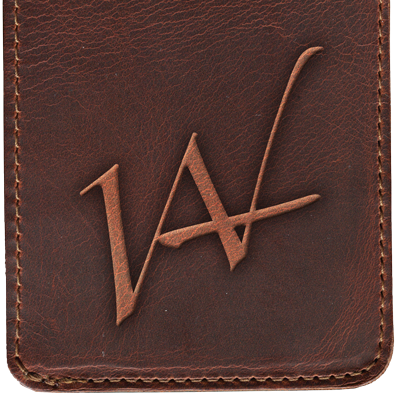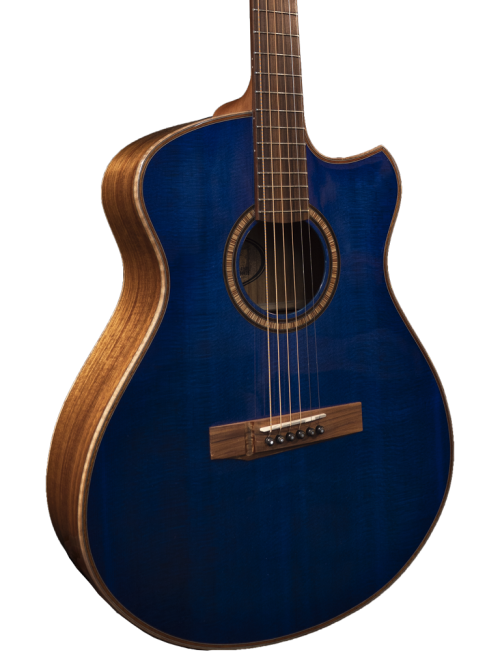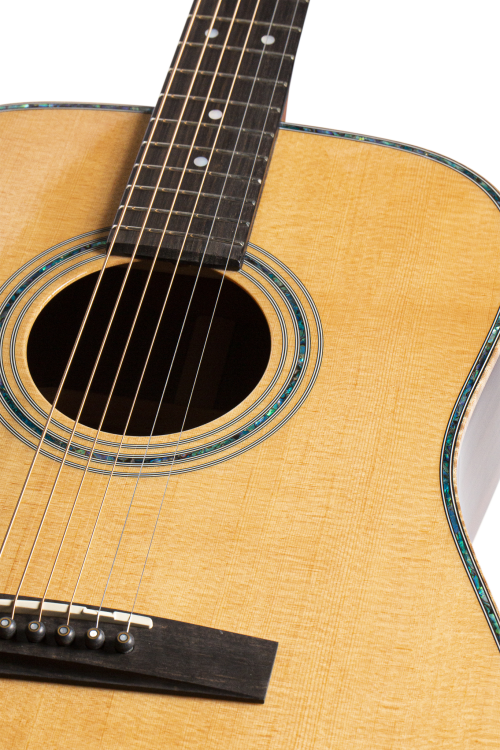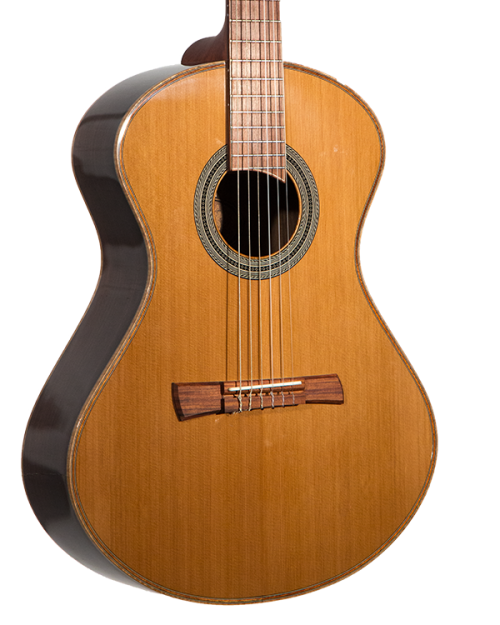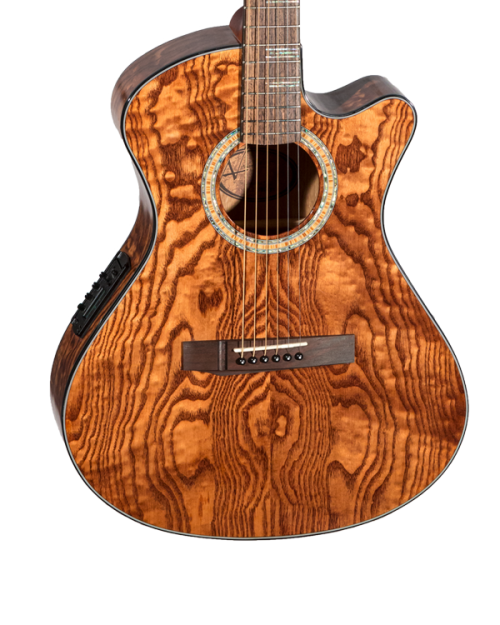Beginner’s Guide to Jamming: Visualizing the Fretboard
By: Josh Lucas
To be fair, we’re now moving into intermediate territory. So if you started out with our other “Beginner’s Guide to Jamming,” articles, and those are easy for you–then congratulations! You’re leveling up, and who doesn’t love that?
Okay everyone, so today we’re going to get into mapping out the fretboard.
So what does that mean?
Well, first–there are no rules in music, so you’re certainly welcome to play any note you want at any time. But most of the time you’re going to want to know how to play in key.
On guitar, you can often play the same note, notes, or chords, in more than one place.
Think about how tuning works! The 5th fret of the E string makes the same sound as the open A string. That means that both notes are “A”, even though they’re located in different places on the guitar’s neck.
Fortunately that means that we can use similar patterns in different places for scales, which is what we’ll focus on today.
Here is the E Minor Pentatonic scale completely notated and tabbed out for you.
In addition to mastering the patterns, I think it’s useful to practice going from each note in a key, up to the same note an octave above–(measures 13-20):
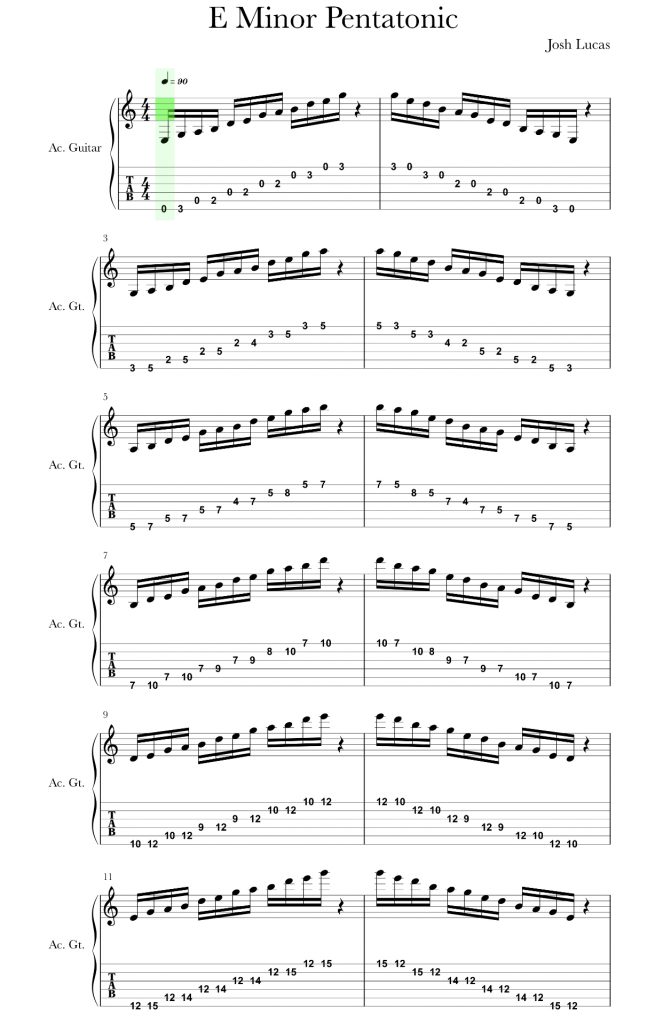
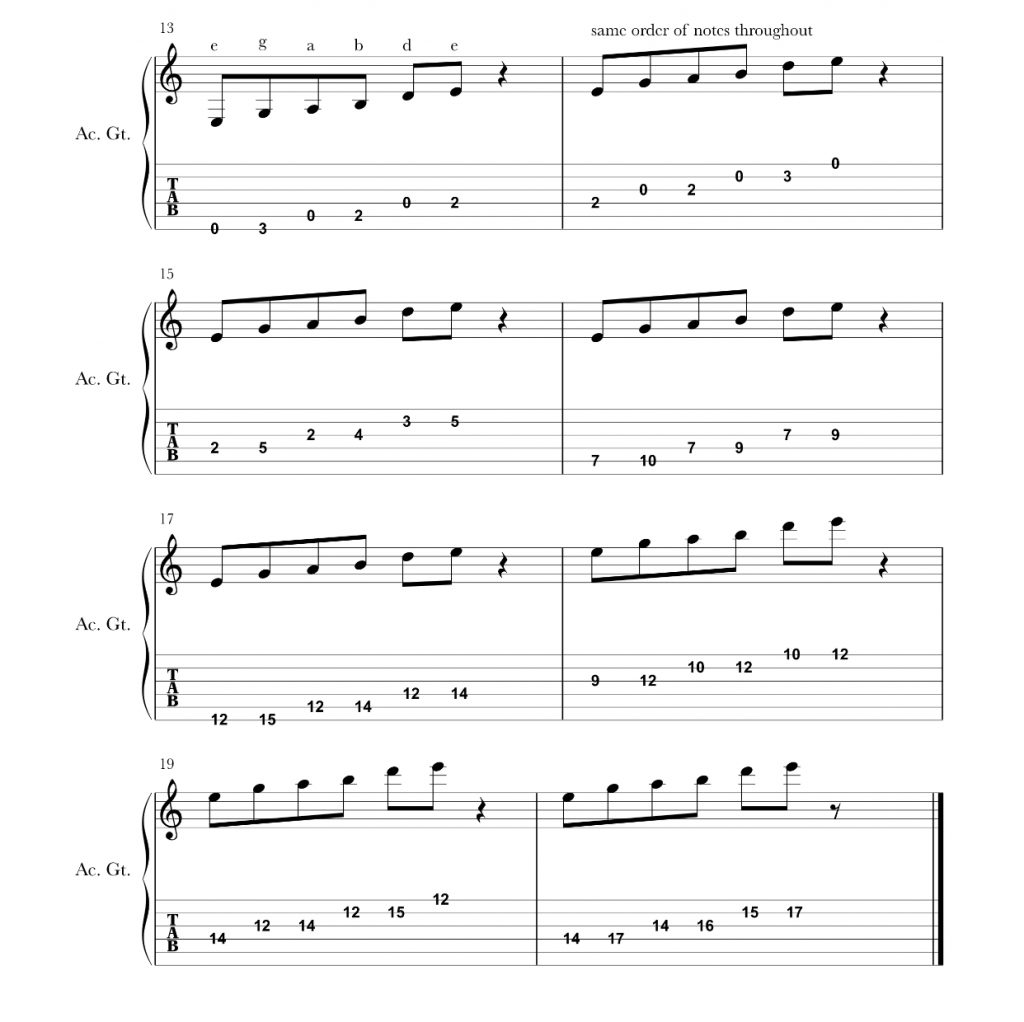
The notes, in order, are E, G, A, B, D, and we finish on an E one octave above.
Next time we’ll try out the same thing, but starting on the next note of the pentatonic scale. If you want to look ahead, you can try going from G-G with the pentatonic scale, then A-A, etc. That’s what we’ll be focusing on next time!
